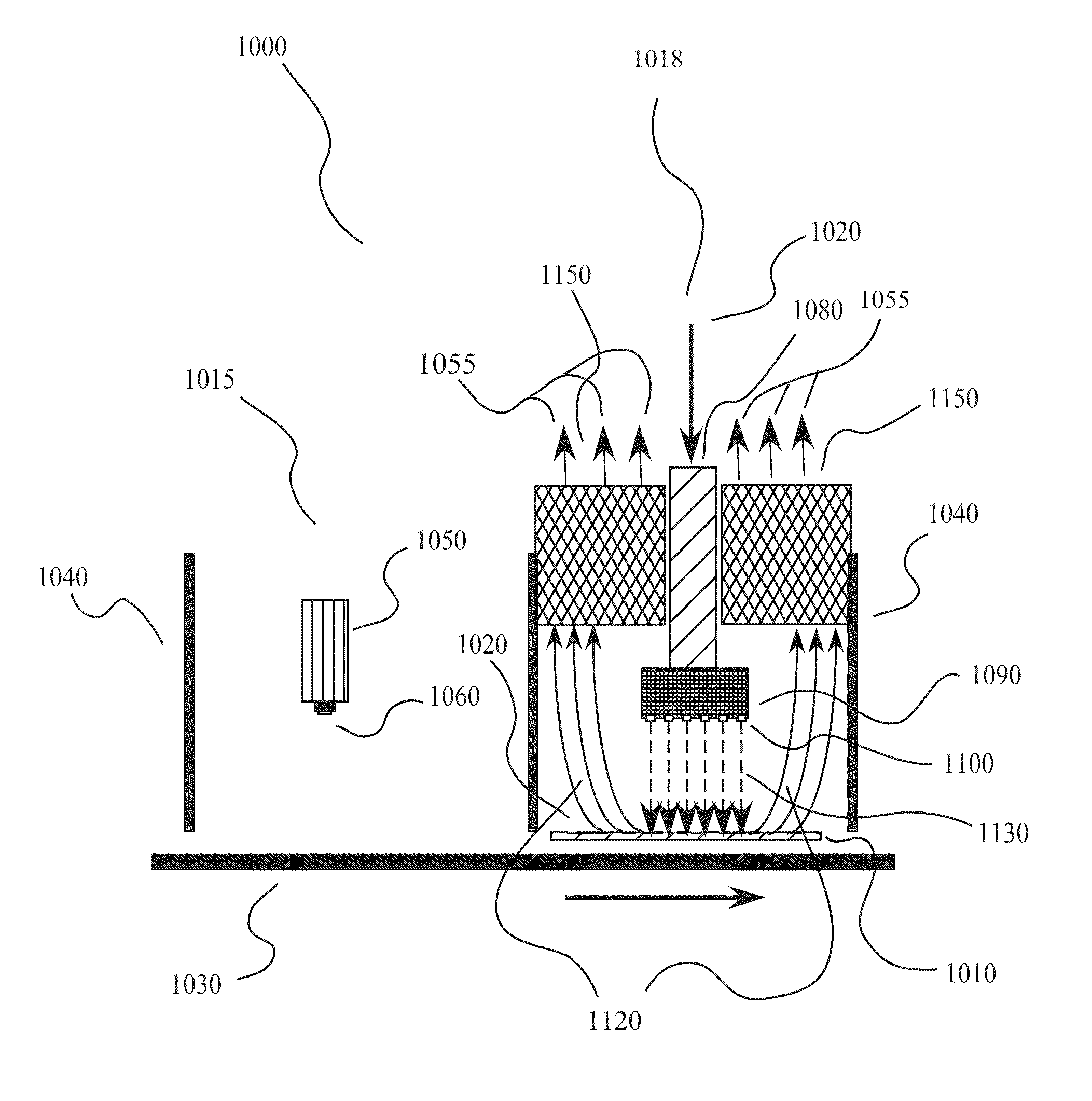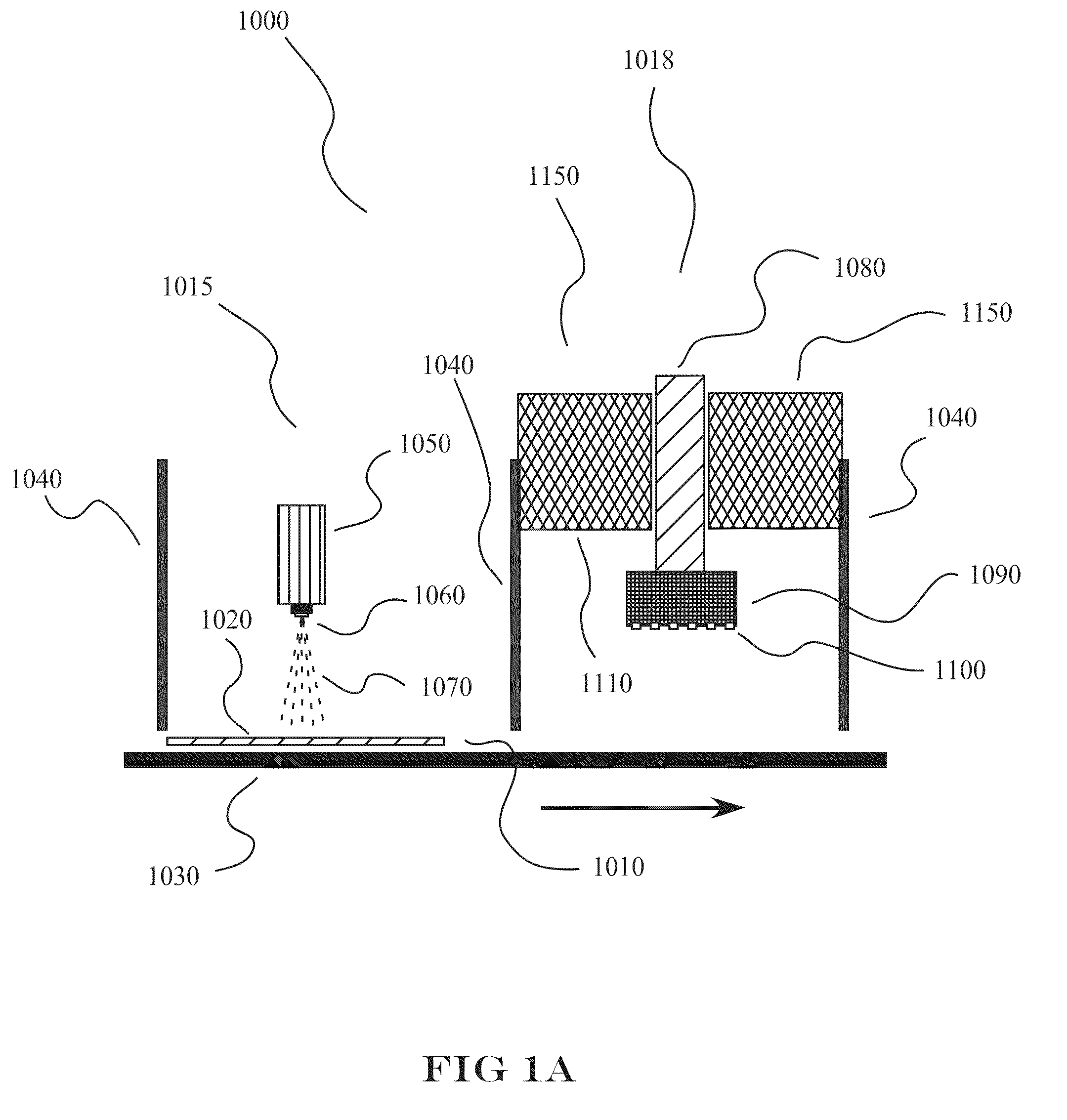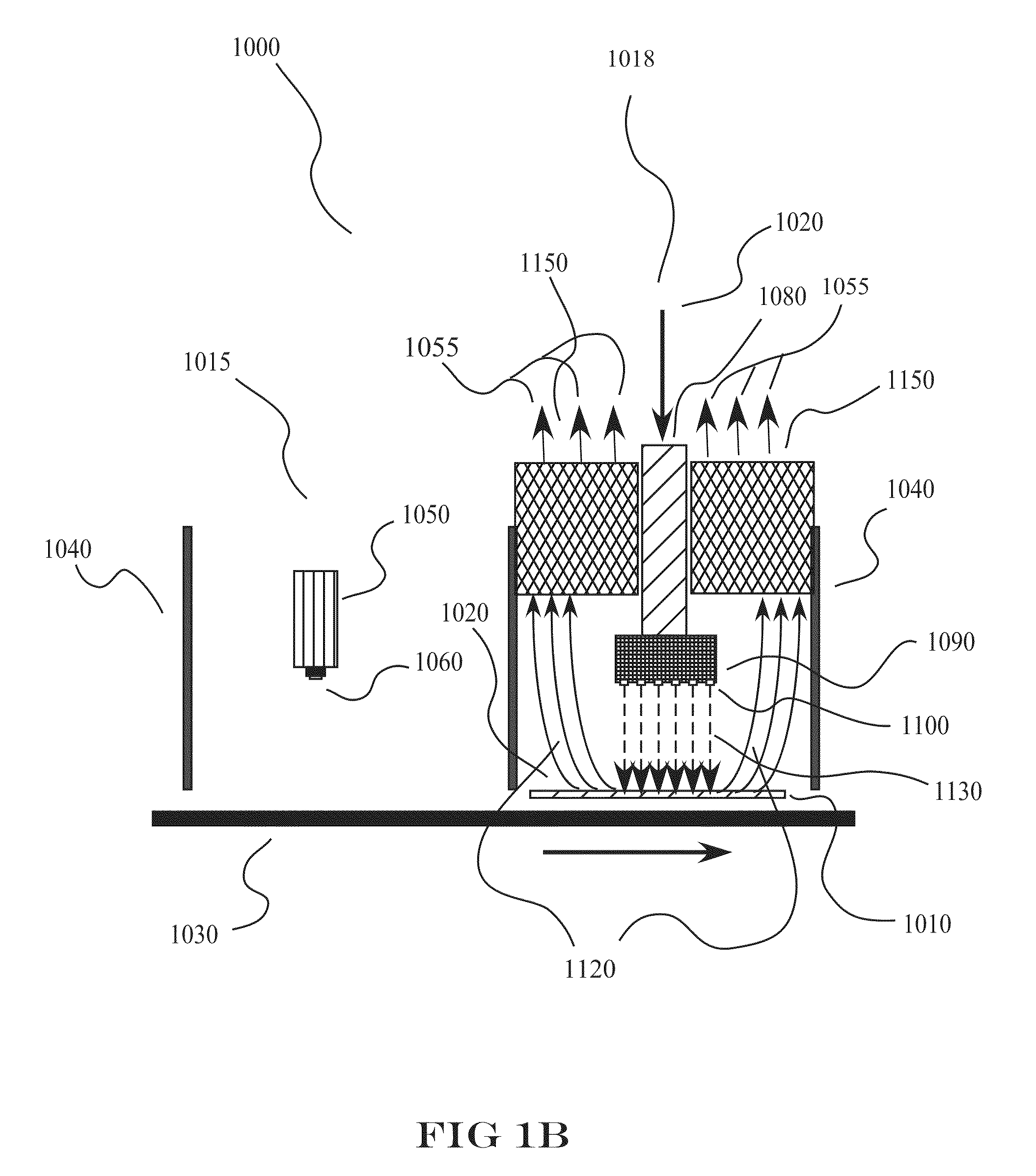Methods and systems for making battery electrodes and devices arising therefrom
a battery electrode and manufacturing method technology, applied in the direction of electrode manufacturing process, mechanical vibration separation, nuclear engineering, etc., can solve the problems of reducing the performance and reducing the efficiency of the battery electrod
- Summary
- Abstract
- Description
- Claims
- Application Information
AI Technical Summary
Problems solved by technology
Method used
Image
Examples
example 1
Basic Spray / Dry Process
[0083]Basic spray / dry method was tested using an airbrush filled with a suspension containing:
[0084]Spraying was performed manually with a back and forth motion of the spray head parallel to the surface of the substrate. Approximately 40 passes were made to load the surface to a desired amount.
example 2
Multi-step Spray / Dry Process
Example 3
Fabrication of Electrodes into a Cell
[0085]Circles were cut from each type of electrode (cathode / anode) in a size to fit into a pouch. A porous polymer sheet was placed between the electrodes as they were layered into the pouch. Electrolyte (LiPF6) was added prior to vacuum sealing the pouch to form a pouch cell.
example 4
Testing of Cell
[0086]The following protocol was followed to test cells made with the electrodes of the invention:[0087]a) Measure open circuit voltage (OCV) (10 sec)[0088]b) Apply 1 sec current pulse (0.5 mA for coin cells, 5-10 mA for pouch cells)[0089]c) Measure voltage drop between OCV and the first 10 msec of applied pulse[0090]d) Impedance testing: A few special cells, especially large pouch cells:[0091]e) Measure impedance from 1000 kHz to 0.01 Hz
[0092]Anode Half-cells[0093]a) Resistance test[0094]b) Initial capacity test in constant current mode (3 cycles, starting with discharge cycle, each cycle running at 25 mA / g and then lowering to 12.5 mA / g until voltage limit is reached—designated “25+12.5 mA / g”)[0095](a) For graphite ½-cells, voltage limits are 0.01V and 1.5V[0096](b) For silicon ½-cells, voltage limits 0.07V to 1.0V[0097]c) Resistance test[0098]i) Power test* up to 10 mA total current[0099]ii) followed by power test up to 20 mA, if charge withdrawn at 10 mA step is ≧...
PUM
| Property | Measurement | Unit |
|---|---|---|
| frequencies | aaaaa | aaaaa |
| frequencies | aaaaa | aaaaa |
| diameter | aaaaa | aaaaa |
Abstract
Description
Claims
Application Information
 Login to View More
Login to View More - R&D
- Intellectual Property
- Life Sciences
- Materials
- Tech Scout
- Unparalleled Data Quality
- Higher Quality Content
- 60% Fewer Hallucinations
Browse by: Latest US Patents, China's latest patents, Technical Efficacy Thesaurus, Application Domain, Technology Topic, Popular Technical Reports.
© 2025 PatSnap. All rights reserved.Legal|Privacy policy|Modern Slavery Act Transparency Statement|Sitemap|About US| Contact US: help@patsnap.com



